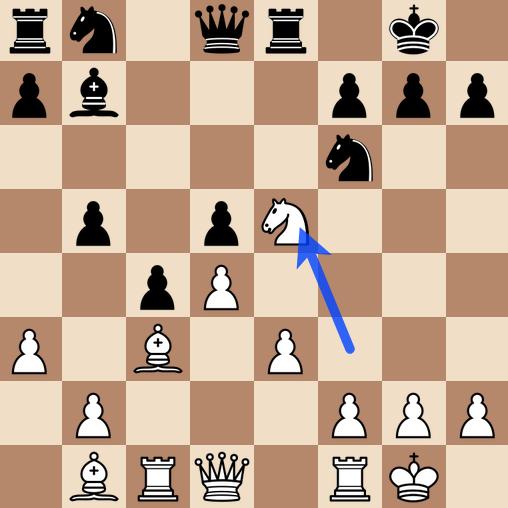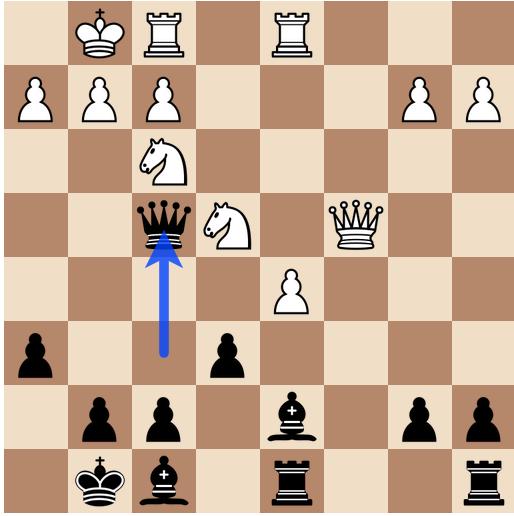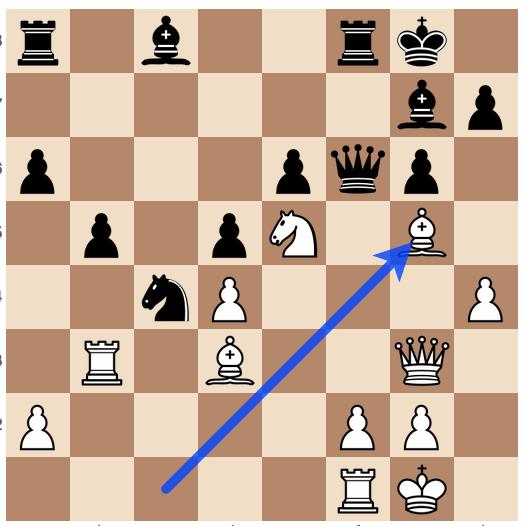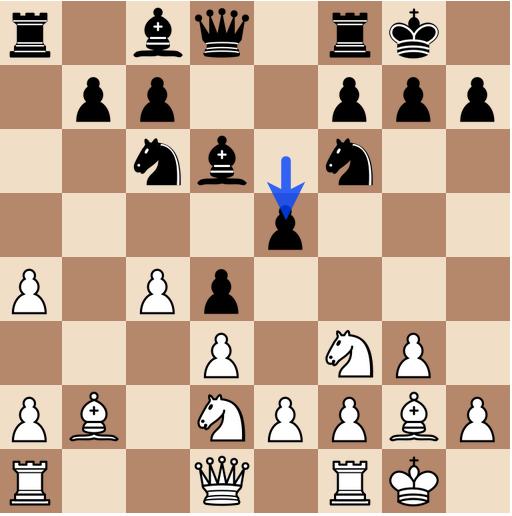In this tenth-round game from Titled Tuesday, Guillermo Baches (Chessllermo) faces M. Mazurkiewicz, with Baches playing the black pieces in a Sicilian Defense. The game quickly turns into a tactical struggle where Mazurkiewicz’s precise play and Baches’ inaccuracies in handling the position allow White to secure a decisive victory.
The Opening
The game begins with the Sicilian Defense (1. e4 c5), a well-known and sharp opening that leads to complex positions. Mazurkiewicz opts for the Closed Sicilian setup with 3. g3 and 4. Bg2, aiming for a more positional game compared to the more open and tactical main lines of the Sicilian.
Baches develops naturally with 4…g6 and 5…Bg7, setting up a fianchetto structure that is common in the Closed Sicilian. Both players continue to develop their pieces, with Mazurkiewicz castling kingside and Baches following suit. The game remains balanced, but White’s plan is clear: to slowly build up pressure and challenge Black’s setup.
The first critical moment comes with 7. Re1, where White prepares to push e4-e5, challenging Black’s control of the center. Baches responds with 7…Bg4, aiming to provoke a weakening move from White. Mazurkiewicz plays 8. h3, forcing the exchange of bishops with 8…Bxf3 9. Qxf3. This exchange gives White the bishop pair, which can become a significant advantage in open positions.
The Middlegame
The middlegame begins with Baches playing 10…Nd7, aiming to regroup his pieces and prepare for a potential queenside expansion. Mazurkiewicz, on the other hand, continues with 11. Be3, aiming to complete development and prepare for central or queenside action.
Baches’ move 12…b5 signals his intention to expand on the queenside, but this plan comes with risks, as White’s pieces are more centralized and ready to react. Mazurkiewicz quickly challenges Black’s setup with 13. e5, a strong move that opens the center and threatens Black’s knight on f6.
The position becomes tense after 14. f4, where Mazurkiewicz pushes forward, aiming to take control of the center and the initiative. Baches responds with 14…Rxb8 and 15…Nxe5, but these moves allow White to maintain a strong central presence. Mazurkiewicz continues to push forward with 16. a3 and 17. axb4, opening up the queenside and increasing the pressure on Black’s position.
The critical moment comes after 18. Ra7 Re8 19. d4 Nc4, where Baches tries to create counterplay, but White’s position is already becoming dominant. Mazurkiewicz continues to increase the pressure with 20. dxc5 and 21. Rxe3, exchanging pieces while keeping the initiative.
The Endgame
The game transitions into an endgame after the exchanges on move 21, with Mazurkiewicz maintaining a clear advantage. White’s pieces are more active, and Black’s weaknesses on the queenside become apparent. The move 23. Rdd7 further increases White’s dominance, as Mazurkiewicz doubles rooks on the seventh rank, creating strong threats against Black’s king and pawns.
Baches attempts to defend with 24…bxc3 and 25…Qxb2, but the position is already too compromised. Mazurkiewicz continues to apply pressure with 26. Nd5 and 27. Nxe7+, forcing Baches into a difficult position where he has to exchange queens. The endgame that follows is clearly winning for White, as Mazurkiewicz’s rooks and knight are far more active than Black’s pieces.
The final phase of the game showcases Mazurkiewicz’s precise play. After 31. Rxa7, White’s rook dominates the open files, and Baches is unable to find counterplay. The move 33. Rxf7 seals Black’s fate, as the threat of Nf6+ becomes unstoppable. Baches is forced to resign after 34. Nf6, as White’s threats are overwhelming, and Black is left with no good defenses.
Conclusion
This game highlights the dangers of an overly ambitious queenside expansion without adequate preparation, especially in the Sicilian Defense. Mazurkiewicz effectively capitalized on Baches’ inaccuracies, using tactical awareness and piece activity to dominate the middlegame and convert the advantage into a winning endgame.
Key Lessons:
- In the Sicilian Defense, timing and preparation are crucial when launching a queenside expansion. If not carefully executed, it can lead to weaknesses and counterplay for the opponent.
- Central control and piece activity often dictate the course of the game; White’s control of the center and active pieces allowed Mazurkiewicz to dominate the game.
- Tactical awareness is essential in open positions; precise calculation and exploiting weaknesses can quickly turn a balanced game into a decisive victory.
“Chess is a game of precision—every move counts, especially when the position is open and full of tactical possibilities.” Mazurkiewicz demonstrated this principle by outplaying Baches and securing a well-deserved win.






